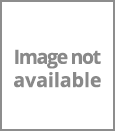Speak directly to the analyst to clarify any post sales queries you may have.
The anti-corrosion coating market is at a pivotal moment as industries prioritize safeguarding infrastructure and equipment from costly degradation. Senior decision-makers are navigating complex shifts in technology, regulation, and supply chains to maintain operational reliability and asset longevity amid evolving industry expectations.
Market Snapshot: Anti-Corrosion Coating Market Size & Growth
The global anti-corrosion coating market is experiencing healthy expansion, with a compound annual growth rate (CAGR) of 5.61%. Market value is set to move from USD 32.87 billion in 2024 to USD 34.58 billion in 2025, ultimately reaching USD 50.90 billion by 2032. This growth is fueled by heightened regulatory scrutiny, organizations’ focus on maximizing asset lifespans, and accelerating adoption of advanced coating technologies. Environmental stewardship and the drive for efficient lifecycle management are influencing purchasing decisions, while innovation across material science positions the sector for further transformation.
Scope & Segmentation
This comprehensive report analyzes the anti-corrosion coating market by mapping demand, value, and opportunity across all key segments. Understanding these segments enables organizations to target investments effectively and respond to fast-changing customer priorities:
- Coating Types: Alkyd, Epoxy, Polyester, Polyurethane — each material type addresses specific use-case challenges, from resistance levels to environmental impact.
- Categories: Barrier Coatings, Inhibitive Coatings, Sacrificial Coatings — these approaches offer distinctive performance characteristics and fit distinct infrastructure protection strategies.
- Technology: Solvent-Borne, Waterborne — technological differentiation drives compliance with emission norms and shapes competitive advantage as buyers demand safer and sustainable options.
- Substrates: Concrete, Aluminum, Iron, Steel, Plastic, Wood — anti-corrosion coatings are tailored for different substrate vulnerabilities and functional requirements within construction and equipment applications.
- Applications: Industrial Coatings, Marine Coatings, Pipe Coatings, Roof Coatings, Tank Linings — widespread usage spans from harsh marine environments to critical industrial infrastructure.
- End-Use Industries: Aerospace & Defense, Automotive, Construction, Marine, Oil & Gas, Power Generation — penetration across these sectors underscores the essential role of protective coatings in minimizing operational risk and capital costs.
- Regions: Americas, Europe, Middle East & Africa, Asia-Pacific — geographic demand patterns reflect diverse regulatory climates, investment flows, and preferred technologies.
Key Takeaways for Senior Decision-Makers
- Innovative anti-corrosion coatings enhance asset protection, contributing to reduced maintenance and improved reliability for capital-intensive sectors.
- Waterborne and high-solids formulations are being prioritized by manufacturers to align with emission standards and support sustainability agendas.
- Integrating digital monitoring tools allows real-time tracking of coating performance, enabling predictive maintenance to lower operational disruptions.
- Companies are leveraging strategic partnerships and vertical integration to navigate raw material price volatility and build resilient, responsive supply chains.
- Regional regulatory requirements, local climates, and infrastructure spending foster tailored coating solutions and encourage local production strategies to address end-user needs.
- Leading industry players are focusing on eco-efficient formulations and advanced material platforms, which differentiate offerings in a competitive landscape.
Tariff Impact: Navigating U.S. Tariffs and Supply Chain Realignment
The 2025 U.S. tariff introduction has triggered significant reassessment within the anti-corrosion coating sector. Manufacturers and importers with international supply chains are revising contracts and increasingly evaluating domestic sourcing to mitigate margin pressures. In response, domestic producers are scaling up capacity and fortifying local production lines. There is also an industry-wide pivot toward alternative materials and integrated procurement, resulting in deeper supplier collaborations. This ongoing realignment is shaping project timelines, investment decisions, and supplier agreements, while encouraging firms to adopt flexible sourcing models to control risk exposure related to tariff fluctuations.
Methodology & Data Sources
This report adopts a blended research approach. Rigorous secondary analysis of industry literature, patents, and official filings is combined with targeted primary interviews across the value chain—from formulators to procurement leads and end users. All quantitative insights are validated using supplier shipment data and trade records provided by government sources, ensuring accuracy and practical value for leaders formulating market strategies.
Why This Report Matters
- Informs strategic planning by highlighting key procurement trends and opportunities across anti-corrosion coating categories and regions.
- Facilitates proactive risk management through detailed examination of tariff effects and raw material supply dynamics.
- Guides capital allocation toward next-generation coating chemistries and digital asset monitoring technologies with proven impact on asset reliability.
Conclusion
As industry frameworks and technologies shift, stakeholders who adapt to regulatory changes and supply dynamics will strengthen their competitive position. Anticipating client needs and prioritizing sustainable innovation will define success in the anti-corrosion coating market.
Additional Product Information:
- Purchase of this report includes 1 year online access with quarterly updates.
- This report can be updated on request. Please contact our Customer Experience team using the Ask a Question widget on our website.
Table of Contents
3. Executive Summary
4. Market Overview
7. Cumulative Impact of Artificial Intelligence 2025
List of Figures
Table Information
| Report Attribute | Details |
|---|---|
| No. of Pages | 183 |
| Published | October 2025 |
| Forecast Period | 2025 - 2032 |
| Estimated Market Value ( USD | $ 34.58 Billion |
| Forecasted Market Value ( USD | $ 50.9 Billion |
| Compound Annual Growth Rate | 5.6% |
| Regions Covered | Global |
| No. of Companies Mentioned | 26 |









